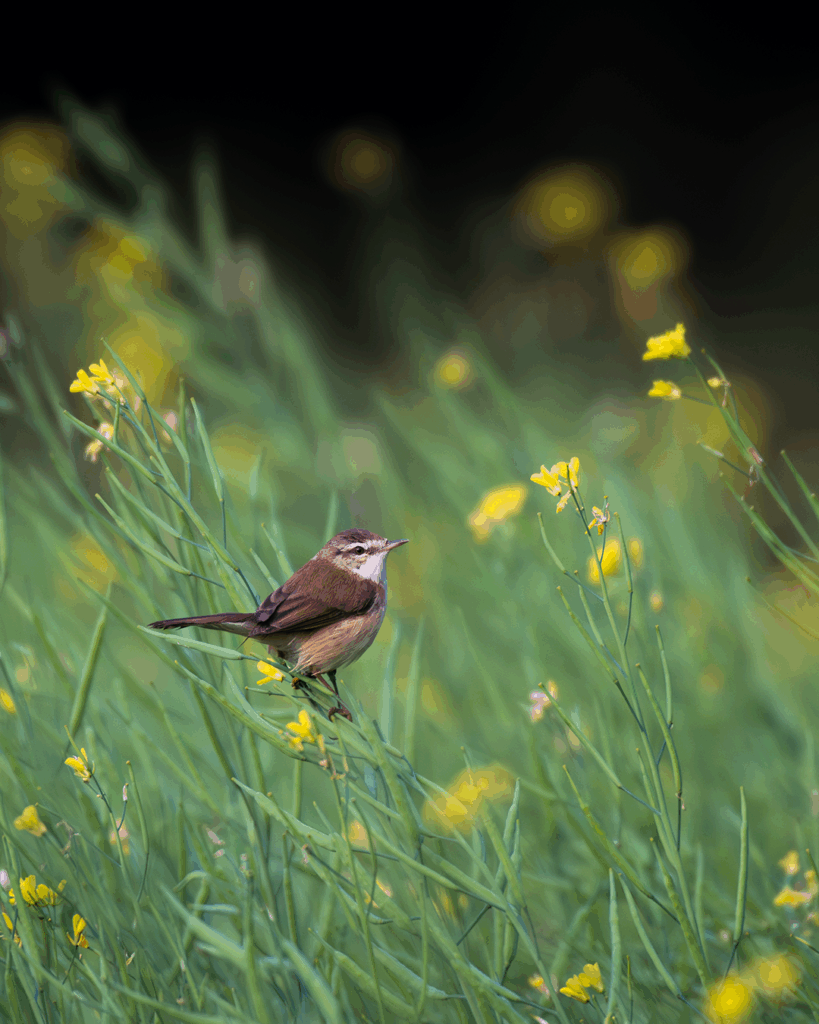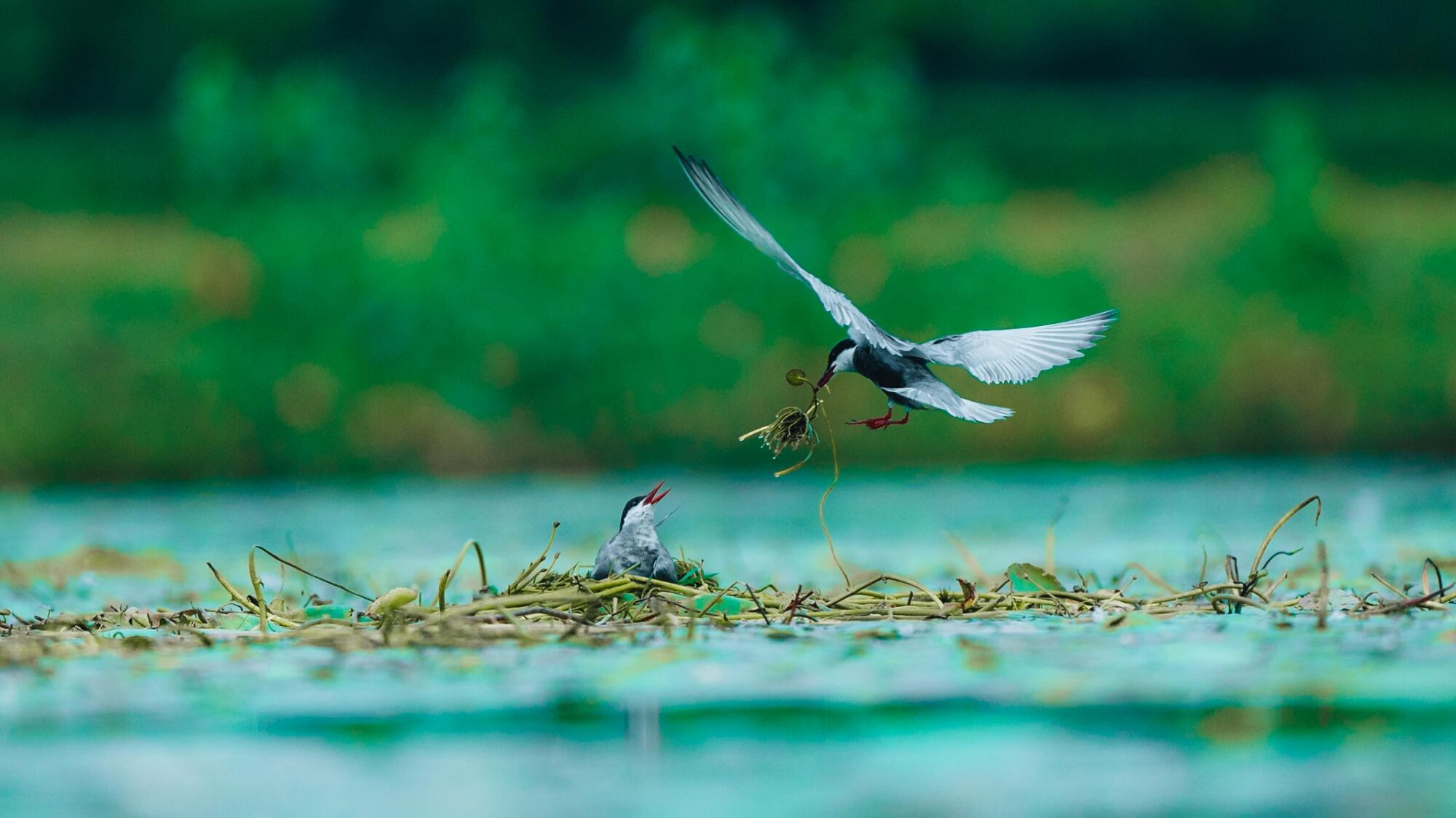When I was a child, our summers often ended in the village pond. The water was cool, lotus flowers floated lazily on the surface, and the hills stood quietly in the background. Those were simple joys — swimming with friends, laughing, sometimes just floating on our backs while clouds drifted past.
One rainy afternoon, while we were splashing about, I noticed some small white birds. They darted across the pond, diving into the water, catching insects and fish. At first, they were just part of the scene, like the flowers or the hills. But that monsoon, they became something more.
I remember one moment as if it were yesterday. A bird was hiding something under its wings. Curious, I swam closer, dipping underwater so I wouldn’t scare it away. And there, for only a few seconds, I saw something magical — a floating nest with an egg. The egg was cracking open, and a tiny chick was halfway out, trembling at the edge of life.
The parent birds stood tall, calling “kreu… kreu…”, sharp and urgent. Fear and wonder rushed through me together. I ducked back under the water and swam away, but that moment never left me.
For weeks we returned to watch them. And then, one day, they were gone. The pond felt strangely empty. Childhood moved on, but those birds had already taken root in my memory.
First Encounter with a Colony
Years later, while exploring the Purulia–Jharkhand border, my friend Amit Da heard the same sharp call. A flash of white crossed the road, and he knew at once: Whiskered Terns. He called us — Suprakash, Partha Da, and me — and we went to look.
The sound reached us before the sight. A chorus of calls, echoing across the wetland. And then we saw them: seventy, maybe eighty Whiskered Terns in the air. Some skimmed just above the water; others wheeled high in the sky, their wings catching the light.
I stood still for a while, watching. It took me straight back to that village pond — except now I wasn’t a boy sneaking up with fear, but a man with a camera, patience, and the same old curiosity.

Breeding Behaviour of Whiskered Terns
Whiskered Terns (Chlidonias hybrida) are colonial nesters. They prefer shallow wetlands with floating plants like lotus and water hyacinth, where they build their nests.
In India, their breeding season falls between June and August. Both parents take part in nest-building: the male collects plant bits, and the female arranges them into a floating platform. Courtship is full of drama — males bring food, often tadpoles or small fish, and offer them to females, either mid-flight or on the nest.
Egg-laying usually happens from late June to mid-July, with 2–3 eggs per clutch. Incubation lasts around 20–25 days, shared by both parents, though females spend more time sitting on the eggs. Males are more active in bringing food.
A Moment I Still Remember
While watching the colony, I saw something really interesting between one pair. Most nests already had chicks by then, but this female was still sitting on her three eggs for more than ten days.
The male kept flying in with tadpoles, trying to offer them to her. She wasn’t interested at all — she just ignored the food and stayed focused on her eggs. But the male didn’t give up. After a few more tries, even though she refused again, he still managed to mate with her.
It was kind of surprising for me to see. I had read about males offering food as part of courtship, but to watch it happen in real life, with all the persistence and rejection, made me realize how much is going on in these colonies beyond what we usually notice.
A Colony in Defense
Not all moments were quiet. One day, the entire colony erupted. Birds burst into the air, circling, screaming, wings flashing. Nests and eggs were left behind. For a few seconds, it looked like chaos.
And then I saw the reason: a black kite circling above. The terns, tiny in comparison, didn’t scatter. They attacked together, diving and mobbing the predator until it gave up and flew off. Then, just as quickly, calm returned, and the terns settled back to their nests.
When the Wetland Fell Silent
Weeks later, when we went back to the wetland, what we saw really broke my heart. The place was empty. Not a single tern in sight. By that time the chicks should still have been in the nests — too small to fly away on their own. Something was not right.
After asking around, we realized the reason. People had started **mass fishing** in that pond. Chinese nets, tube boats— and in the process, all the nests were destroyed. The whole colony just vanished. It hit me hard. These birds had worked for weeks — building nests, incubating eggs, feeding chicks — and suddenly everything was gone. All because of one human activity.
wetlands aren’t just for fish or people, they’re also home to countless birds. If we don’t balance our needs with theirs, we lose more than we realize.

